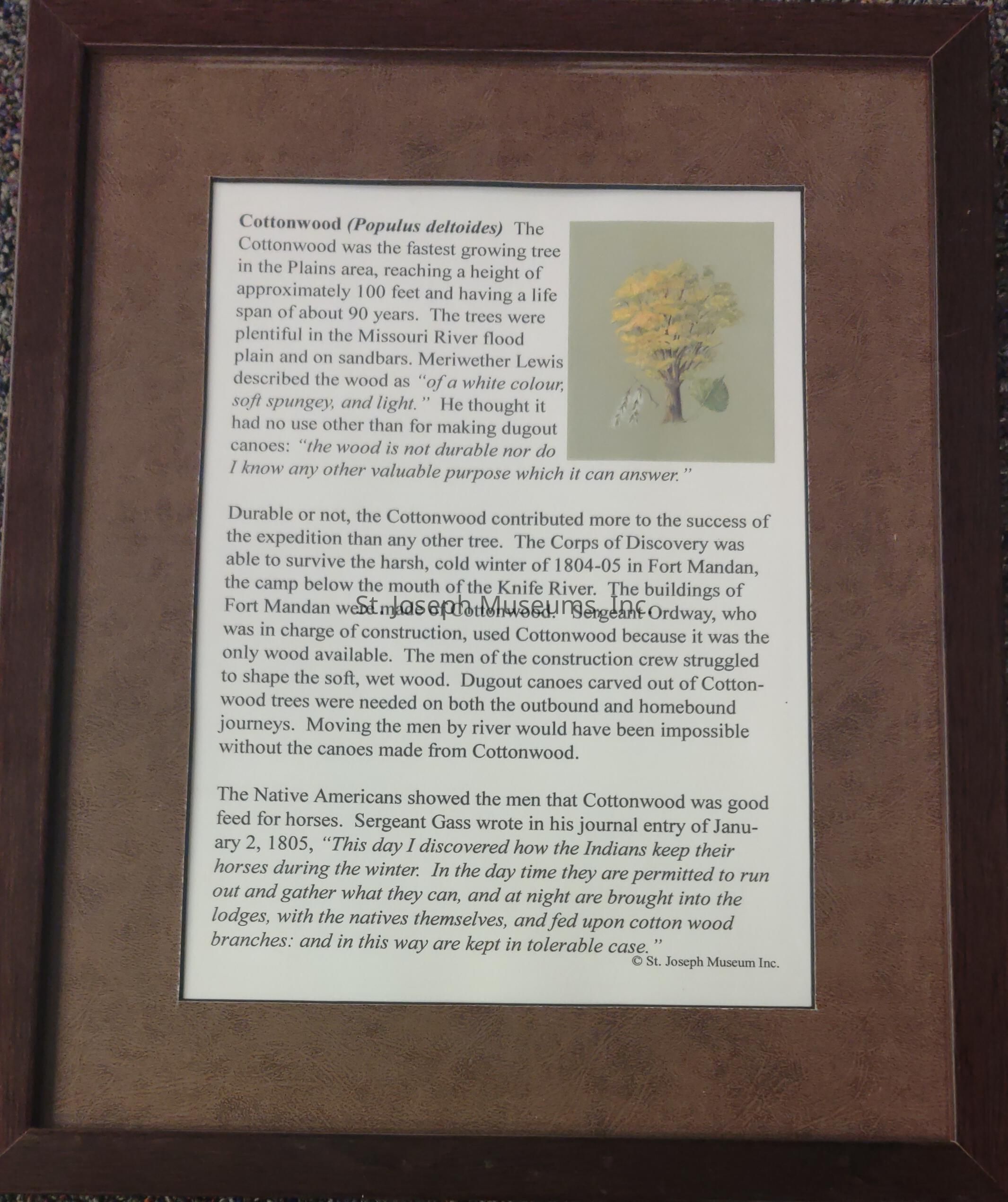Name/Title
Cottonwood (Populus deltoides)Entry/Object ID
2021.1.31 BScope and Content
Cottonwood (Populus deltoides) plant description, framed.
The Cottonwood was the fastest growing tree in the Plains area, reaching a height of approximately 100 feet and having a life span of about 90 years. The trees were plentiful in the Missouri River flood plain and on sandbars. Meriwether Lewis described the wood as "of a white colour, soft spungey, and light." He thought it had no use other than for making dugout canoes: "the wood is not durable nor do I know any other valuable purpose which it can answer."
Durable or not, the Cottonwood contributed more to the success of the expedition than any other tree. The Corps of Discovery was able to survive the harsh, cold winter of 1804-05 in Fort Mandan, the camp below the mouth of the Knife River. The buildings of Fort Mandan were made of Cottonwood. Sergeant Ordway, who was in charge of construction, used Cottonwood because it was the only wood available. The men of the construction crew struggled to shape the soft, wet wood. Dugout canoes carved out of Cottonwood trees were needed on both the outbound and homebound journeys. Moving the men by river would have been impossible without the canoes made from Cottonwood.
The Native Americans showed the men that Cottonwood was good feed for horses. Sergeant Gass wrote in his journal entry of January 2, 1805, "This day I discovered how the Indians keep their horses during the winter. In the day time they are permitted to run out and gather what they can, and at night are brought into the lodges, with the natives themselves, and fed upon cottonwood branches: and in this way are kept in tolerable case."Context
Originally designed by the St. Joseph Museum in the fall of 2004. Titled "Botanical Wonders of the Uncharted West. The Recorded Flora of the Lewis & Clark Expedition."Collection
Lewis and ClarkLexicon
LOC Thesaurus for Graphic Materials
Botanical drawings, Expeditions & surveysArchive Items Details
Title
Cottonwood (Populus deltoides)Creator
Mary L. FletcherDate(s) of Creation
2004Subjects
Plants, Watercolor paintingsParts
Count
2Parts
Watercolor of plant and descriptive label, both framed.Condition
Overall Condition
Very GoodProvenance
Notes
"Botanical Wonders of the Uncharted West" visually depicts how well Lewis followed Jefferson's instructions. In recognition of this achievement, The S. Joseph Museums, Inc. commissioned accomplished artist Mary Fletcher to create fifty (50) selected paintings of flora documented by the Corps during their Journey. These framed watercolor originals are accompanied by similarly framed labels, generated by former Head of Research Jackie Lewin, which describe the corresponding plants with appropriate quotations from the Journals. This collection makes available for study and appreciation plants that were new to Lewis and Clark, but which Native Peoples already recognized as valuable sources of food, medicine, and tools. Some of these still remain a mystery to many, but all will enjoy their beauty, their diverse uses, and their accomplished renderings.
